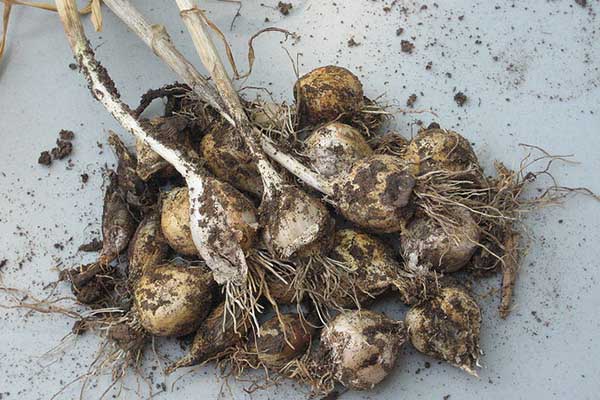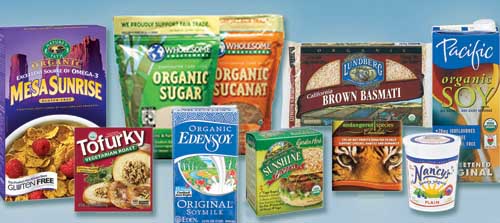Here at Eat Drink Better, we focus most on healthy food for humans, but what about our companion animals? Not all foods are safe for our dogs to eat. These are five foods that are toxic to dogs that you might not know about.

We just adopted a second dog. Our first dog, Jenna, rarely tries to eat food we drop on the floor. She’s basically a 45 pound cat. But Bandit, our new addition, really lives up to his name. He’s a living vacuum cleaner and has even stolen food right out of my four-year-old’s hand.
Related: Why do we eat cows and pigs, but not dogs and chickens?
Suddenly, I’m having to learn about which foods it’s ok to let slide and which I need to chase him from and clean up right away. Some people foods that are toxic to dogs, like chocolate, are pretty common knowledge, but a handful of the ones that I learned about really surprised me.
Here are the people foods that are toxic to dogs that you may not already know about.
Surprising Foods that are Toxic to Dogs

1. Xylitol
Xylitol is an artificial sweetener that is in so. many. foods. It’s in chewing gums, salad dressings, breads, and even some brands of peanut butter. So many dog owners – myself included – use peanut butter to give our dogs medicine. Check the ingredients for xylitol before you hide those meds!
Related: How Aspartame Affects Your Health
It’s relatively safe for humans to eat xylitol, but in dogs, the sweetener causes a dangerous drop in blood sugar and can cause liver damage at high doses. If your dog ingests xylitol, call your vet right away to see what you should do. According to Snopes, it takes eight to 10 pieces of xylitol-sweetened chewing gum to kill a 65 pound dog. That might seem like a lot, but I could absolutely see Bandit eating a whole pack of gum, if he got his paws on one.

2. Raisins & Grapes
Grapes and raisins are extremely toxic to dogs. Just a few of either can cause serious illness or even death. The jury is still out on why grapes and raisins are such toxic foods for dogs, but we do know that they can cause kidney failure, if your dog eats too many. And, like I said, just a few can be too many, especially for smaller dogs.
If your dog has eaten grapes or raisins, PetMD says that this is a medical emergency. You should induce vomiting as soon as possible, and get your dog to the vet.

3. Onions (any kind)
All varieties of onions are toxic to dogs, including scallions, chives, and leeks. While onions are toxic to dogs, it’s not necessarily an emergency situation like it would be with raisins. Some dogs react more strongly than others to onions, so if your dog eats onion, keep an eye on her. It can take up to a few days for symptoms to arise, unfortunately. If she exhibits any symptoms like vomiting, rapid breathing, diarrhea, pale gums, drooling, or lethargy, call your vet.

4. Garlic
Garlic is in the same family as onions, but it is considered five times more toxic than other members of the Allium family, so I’ve broken it out on its own in this list.
Like with onions, watch your dog closely for a few days, if she eats garlic, to make sure that she’s not having a reaction. Some dogs will react, others won’t. The symptoms of a garlic reaction are the same as the symptoms for onion toxicity:vomiting, rapid breathing, diarrhea, pale gums, drooling, or lethargy.

5. Macadamia Nuts
Like with raisins, the jury is out on why macadamia nuts are toxic to dogs. And like xylitol, the amount a dog can eat without serious issues varies a lot. Veterinarian Dr. Scott Nimmo said in a blog post that, “The reported toxic dose ranges from between 2.4 to 62.4 grams of nut per kilogram of the dog’s body weight. This is a very large range and can mean that some dogs will get ill with just a small amount of nuts ingested, while other dogs need to eat a lot of nuts to show signs of toxicity.”
If your dog does eat macadamia nuts, you’ll need to monitor her for the next 12 hours. If possible, induce vomiting to get any undigested nuts out of her symptoms. Common symptoms of macadamia nut poisoning, according to Dr. Nimmo, are: a wobbly walk, lethargy, vomiting, muscle tremors, fever, weakness, and an elevated heart rate. When in doubt, get your dog to the vet.
Image Credits: Peanut butter, grapes, leeks, and garlic images via Shutterstock. Macadamia nuts image by Forest and Kim Starr.





![Food & Climate Change [VIDEO]](https://eatdrinkbetter.com/wp-content/uploads/2010/07/climate-change-agriculture.jpg)


Several years ago it was suggested to add garlic powder to dog food to help reduce fleas. I grew up with us doing this and now it can cause death? I am confused?? But still I will not feed my dogs garlic anymore just in case.
Some dogs will react to garlic and onions, but others won’t. Your dog may be one of the lucky ones that doesn’t. I’ve also heard that garlic helps control fleas, but since my dogs have never had garlic, I’m not going to start them on it.